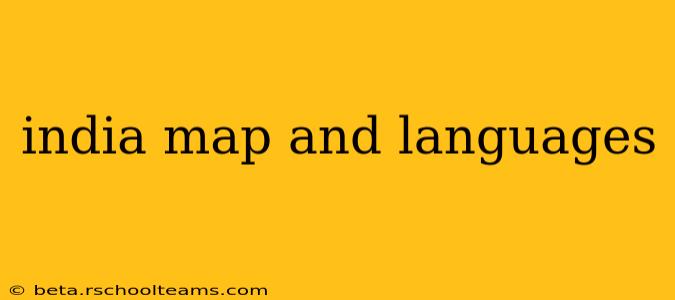India, a land of vibrant cultures and ancient traditions, boasts an astonishing linguistic diversity reflected in its sprawling geography. Understanding India's languages requires more than just a glance at a map; it necessitates delving into the rich history and social fabric that shaped its linguistic landscape. This post will explore the intricate relationship between India's map and its numerous languages, providing a comprehensive overview of this fascinating aspect of Indian identity.
The Geographical Distribution of Indian Languages
India's linguistic map is a complex mosaic, with language families and individual languages intricately interwoven across its diverse regions. The country's geography significantly influences language distribution. For instance, the Himalayan region in the north houses languages belonging to the Sino-Tibetan family, while the Indo-Aryan family dominates the Indo-Gangetic plains. The Dravidian languages are predominantly spoken in the south, reflecting the unique historical and cultural development of this region.
Major Language Families:
-
Indo-Aryan: This family encompasses the majority of Indian languages, including Hindi, Bengali, Marathi, Gujarati, Punjabi, and many others. These languages share common roots and exhibit significant similarities in grammar and vocabulary. Their prevalence is largely due to the historical influence of Indo-Aryan migrations and the spread of various empires throughout the northern and central plains.
-
Dravidian: Predominantly spoken in southern India and parts of central India, the Dravidian language family includes Tamil, Telugu, Kannada, Malayalam, and several others. These languages have a long and independent history, pre-dating the arrival of Indo-Aryan languages. Their unique grammatical structures and vocabulary distinguish them from the Indo-Aryan family.
-
Sino-Tibetan: Found mainly in the Himalayan region and northeastern India, this language family includes languages like Tibetan, Nepali, and various tribal languages. The mountainous terrain and relative isolation of these regions contributed to the preservation of distinct linguistic features.
-
Austroasiatic: Smaller groups of Austroasiatic languages are spoken in pockets of northeastern India, reflecting the region's complex historical migrations.
The Linguistic Map and Political Boundaries:
India's linguistic map doesn't neatly align with its political boundaries. While states often have a majority language, many states are multilingual, reflecting the country's significant internal migration and historical interactions between different communities. This linguistic diversity is a source of both richness and complexity, contributing to the unique cultural dynamism of the nation.
Understanding the Official Languages:
Hindi and English are the official languages of India. While Hindi is the most widely spoken language, its dominance is primarily in northern India. English plays a crucial role in national administration, education, and commerce, facilitating communication across the vast linguistic expanse. The Constitution recognizes 22 scheduled languages, each holding official status in various states or union territories. This recognition aims to protect and promote linguistic diversity.
Navigating the Linguistic Landscape:
For travelers and researchers, understanding the distribution of languages in India is essential. While a single language may be dominant in a particular region, multilingualism is commonplace. Interactive maps available online can provide a detailed visualization of language distribution, but it's essential to remember that the reality on the ground is often more nuanced and complex.
Conclusion:
The relationship between India's map and its languages is a testament to the country's rich and multifaceted history. The geographical distribution of languages reflects centuries of migration, cultural exchange, and political evolution. While navigating this complex linguistic landscape can be challenging, it also offers a fascinating window into the depth and diversity of Indian society. Further research into individual languages and their historical context offers an even richer understanding of this remarkable linguistic tapestry.
